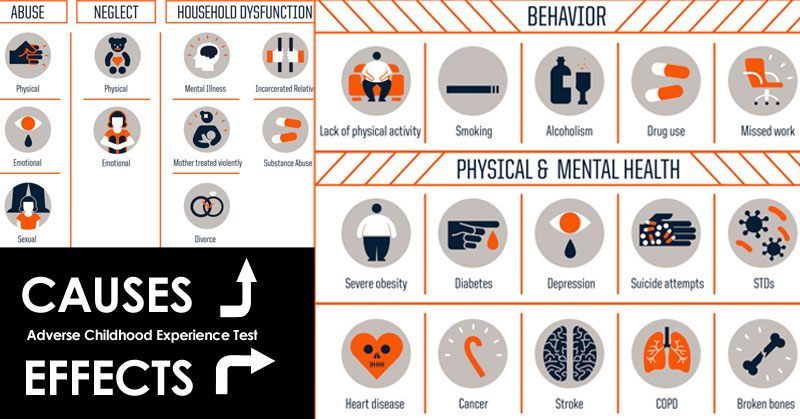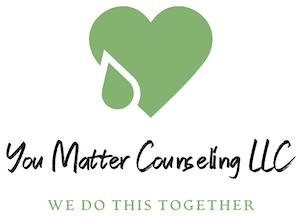The Adverse Childhood Experiences
Another study, The Adverse childhood experiences, or ACEs, are potentially traumatic events that occur in childhood (0-17 years). For example: experiencing violence, abuse, or neglect, witnessing violence in the home or community, having a family member attempt or die by suicide. Also included are aspects of the child’s environment that can undermine their sense of safety, stability, and bonding, such as growing up in a household with: substance use problem, mental health problems, instability due to parental separation or household members being in jail or prison. ACEs are linked to chronic health problems, mental illness, and substance use problems in adulthood. ACEs can also negatively impact education, job opportunities, and earning potential. However, ACEs can be prevented.

Please note the examples above are not meant to be a complete list of adverse experiences. There are many other traumatic experiences that could impact health and wellbeing. Children growing up with toxic stress may have difficulty forming healthy and stable relationships. They may also have unstable work histories as adults and struggle with finances, jobs, and depression throughout life. These effects can also be passed on to their own children. Some children may face further exposure to toxic stress from historical and ongoing traumas due to systemic racism or the impacts of poverty resulting from limited educational and economic opportunities.
The truth is that trauma is a fact of life, the good news is that with all the new research and techniques today it can be healed. There are ways people can heal deeply from their history and like Peter Levine says ” it doesn’t have to be a life sentence. There is more than hope, there are tools.” My walk with you on your journey to healing will be helping you find that hope again and gain the tools you need or already have and don’t know it and apply those tools in your life so you can heal and be free of your traumas.
Reach out today for a FREE 15 min consultation, there is help! Don’t do this alone.
(The above description is provided by www.CDC.org)
